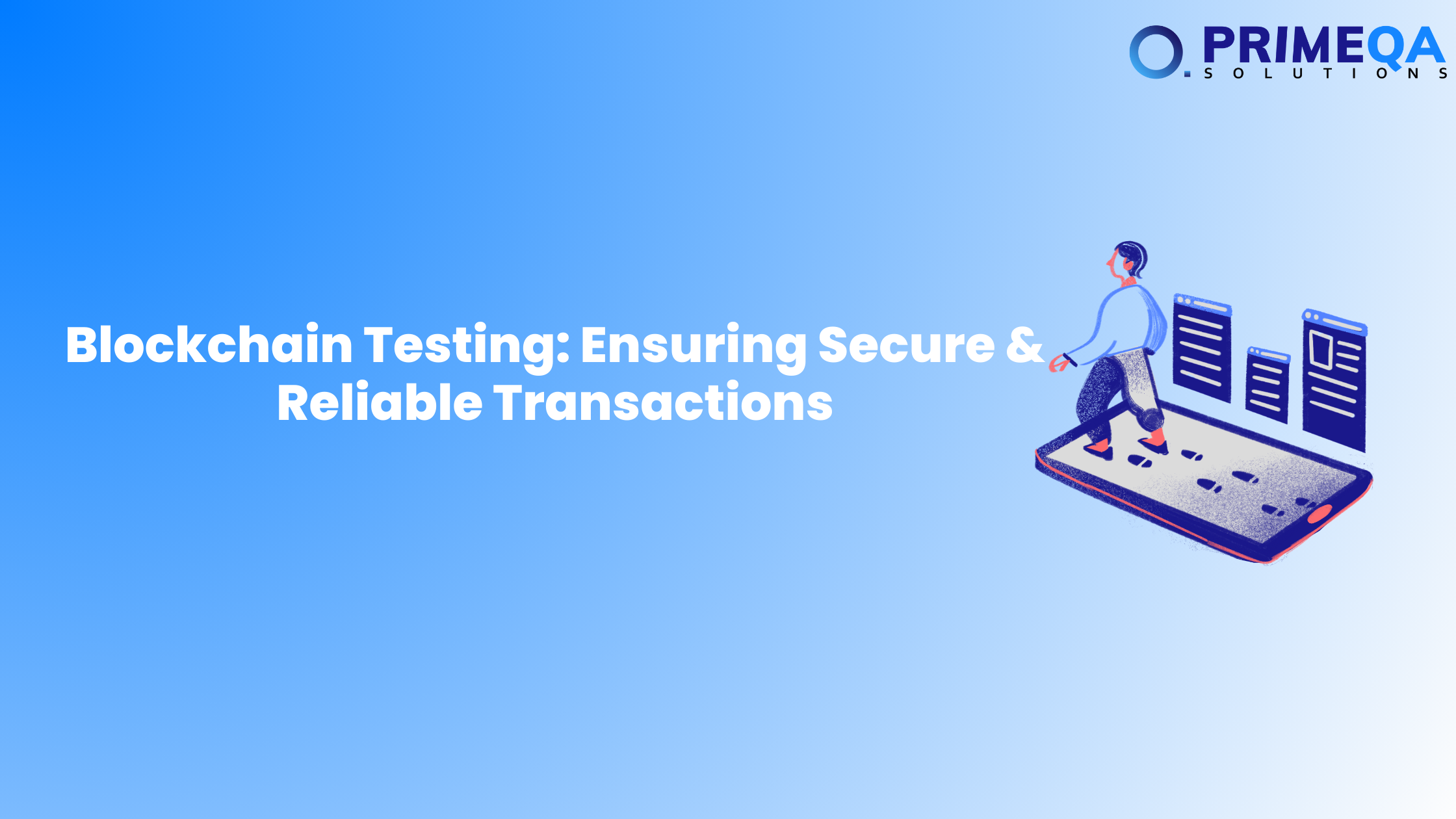Blockchain technology has revolutionized how we perceive data security, decentralization, and digital transactions. Whether it’s cryptocurrencies, smart contracts, or supply chain management, blockchain ensures tamper-proof, transparent, and secure record-keeping. But as with any technology, ensuring reliability, security, and efficiency is crucial. That’s where Blockchain Testing comes into play.
Blockchain testing is an essential process to verify the functionality, security, and performance of blockchain applications. Without proper testing, blockchain networks can face vulnerabilities, leading to potential hacks, transaction failures, or system inefficiencies.
Let’s dive deep into what blockchain testing is, its types, its challenges, and why it’s crucial for secure transactions.
Understanding Blockchain Testing
Blockchain testing involves assessing various components of a blockchain network, including smart contracts, transactions, nodes, consensus mechanisms, and security features. Unlike traditional testing, blockchain testing requires a specialized approach due to the decentralized, immutable, and distributed nature of blockchain systems.
The primary goal is to ensure that blockchain applications work as intended—without bugs, vulnerabilities, or performance bottlenecks. Since blockchain transactions are irreversible, rigorous testing is necessary to prevent costly errors.
Key Components of Blockchain Testing
Blockchain testing isn’t just about running basic tests; it requires evaluating multiple layers:
- Smart Contracts – Ensuring automated agreements execute correctly without vulnerabilities.
- Nodes & Network – Checking how nodes communicate and sync data within the blockchain.
- Consensus Mechanism – Validating the integrity and security of Proof-of-Work (PoW), Proof-of-Stake (PoS), and other consensus models.
- Security & Cryptography – Identifying security loopholes in encryption and private key management.
- Performance & Scalability – Assessing transaction speed, network latency, and blockchain throughput.
Types of Blockchain Testing
Blockchain testing isn’t a one-size-fits-all approach. It involves several testing types to cover every aspect of blockchain applications:
-
Functional Testing
Ensures that all blockchain components function correctly. This includes validating transactions, blocks, smart contracts, and chain integrity.
Example: Testing whether a smart contract correctly executes an agreement based on predefined conditions.
-
Performance Testing
Evaluates the speed, scalability, and responsiveness of a blockchain network under different conditions.
Example: Assessing how many transactions per second (TPS) a blockchain network can handle before slowing down.
-
Security Testing
Identifies potential security threats such as hacks, data breaches, and private key vulnerabilities.
Example: Testing for 51% attacks, double-spending, and replay attacks to ensure data integrity.
-
Smart Contract Testing
Validates the logic, execution, and security of smart contracts using specialized testing frameworks.
Example: Using tools like Truffle, Hardhat, or Remix to detect vulnerabilities before deployment.
-
Integration Testing
Checks how blockchain components interact with external systems like APIs, databases, and cloud services.
Example: Testing how a decentralized finance (DeFi) app integrates with an Ethereum blockchain.
-
Node Testing
Ensures that all nodes in the blockchain network sync correctly, validate transactions, and reach consensus.
Example: Simulating network failures to see how nodes recover and maintain blockchain integrity.
-
API Testing
Evaluates how blockchain APIs handle requests, process data, and interact with external applications.
Example: Checking API responses for a cryptocurrency exchange platform to ensure accurate balance updates.
Why Blockchain Testing is Critical for Secure Transactions
Since blockchain is widely used for financial transactions, identity verification, and asset tracking, the need for robust testing cannot be overstated. Here’s why blockchain testing is crucial:
-
Prevents Costly Errors
Blockchain transactions are irreversible, meaning once a transaction is recorded, it cannot be modified or undone. Any coding error in smart contracts or transaction validation can lead to huge financial losses.
Example: The infamous DAO hack in Ethereum resulted in a loss of $60 million due to a smart contract vulnerability.
-
Ensures Data Security & Privacy
Blockchain relies on cryptographic encryption to secure transactions. Weak encryption or poor private key management can lead to unauthorized access and fraud.
Example: Testing ensures multi-signature wallets and private keys are securely managed to prevent hacking attempts.
-
Validates Network Scalability
As blockchain adoption grows, scalability becomes a challenge. Proper testing helps optimize the network’s ability to handle millions of transactions efficiently.
Example: Bitcoin’s Lightning Network is designed to solve transaction speed issues, which requires thorough performance testing.
-
Protects Against Security Threats
Blockchain networks are prone to cyberattacks, including 51% attacks, DDoS attacks, and Sybil attacks. Testing helps identify and mitigate these threats before deployment.
Example: Ethereum Classic (ETC) suffered a 51% attack in 2020, leading to double-spending of funds.
-
Enhances User Trust & Compliance
Governments and enterprises are increasingly regulating blockchain systems. Proper testing ensures compliance with GDPR, KYC, AML, and other legal requirements.
Example: Banks using blockchain for cross-border payments must comply with financial regulations to avoid penalties.
Challenges in Blockchain Testing
Despite its importance, blockchain testing comes with its own set of challenges:
- Complex Architecture – Requires understanding of decentralized networks, cryptography, and consensus mechanisms.
- Lack of Standardized Tools – Limited blockchain-specific testing frameworks.
- Scalability Issues – Simulating millions of transactions can be resource-intensive.
- Security Vulnerabilities – New attack vectors emerge as blockchain evolves.
Solution?
- Use dedicated blockchain testing tools like Ganache, Truffle, Hardhat, Hyperledger Caliper, and Corda Testing Kit.
- Perform continuous security audits and penetration testing.
Final Thoughts
Blockchain is transforming industries by providing secure, transparent, and decentralized solutions. However, without proper testing, even the most promising blockchain applications can fail. Blockchain testing is essential to ensure error-free transactions, strong security, and seamless performance.
If you’re involved in blockchain development—whether for cryptocurrencies, DeFi, or enterprise applications—investing in rigorous testing strategies will save you from costly errors and security risks.
Want to implement blockchain testing in your project? Start by testing your smart contracts, APIs, and network scalability using specialized tools.
What’s your biggest challenge with blockchain testing? Let us know in the comments!







